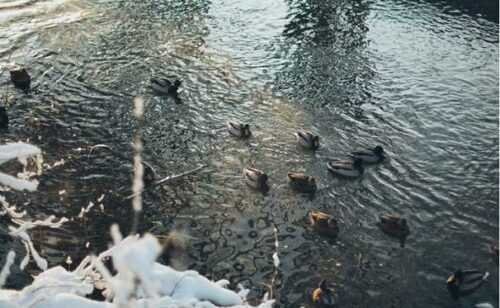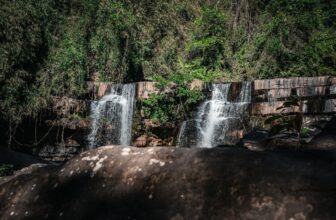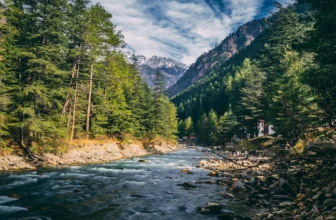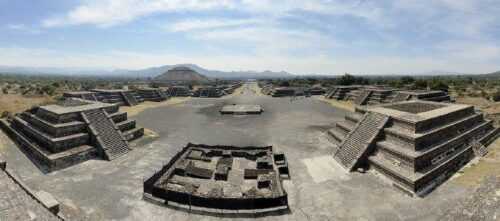
Pyramid and mummies have always been a part of ancient history. Though no one to date could discover how the pyramids built, what was the purpose behind the creation? The theories are only a work of conjecture. Teotihuacan (city of gods) is one such phenomenon that is alive based on researchers’ assumptions.
This grand city ruled by mysterious elites; how did Teotihuacan turn into a massive city; what drove it to greatness? And how it all became a ruin?
The mystery behind its demolition still exists; who built Teotihuacan and why they were declined let us find out the about the world’s most mysteriously disappeared city Teotihuacan.
Teotihuacan pyramids are one of the mysterious places in the world. Known as “the city of gods” the city was once one of the massive urban centers in the primitive period. Sited roughly 50kilometres northeast of present-day Mexico City, no one has any idea concerning who built it.
The city prospered amid 2100 years ago when the construction started, and 1400 years ago, when it came under deterioration, due to a fire that caused grave damage. However, even after the city was lost, it never really got ‘lost.’ The Aztecs made the customary visit to Teotihuacan in later times.
It is still unknown regarding what the inhabitants of this lost city and its buildings called them. The name Teotihuacan was coined by the Aztecs which means “the birthplace of Gods” or “the city of Gods.”
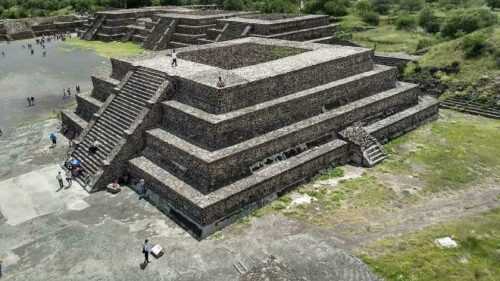
Size of the Pyramid
At its pinnacle, Teotihuacan included an urban center of around eight sq. miles with an inhibition expected more than 100,000 people. Its impact was sensed all over Central Mexico and as far as Guatemala. Anthropologists on Mesoamerican, ken hearth, claims that the city didn’t thrive because of the gold or diamonds they had, it was due to obsidian.
Teotihuacan History
Teotihuacan wasn’t established by 400 BCE. However, it didn’t experience prosperity until three centuries later. The inhabitants of Cuicuilco made the town their refugee since the city was destroyed by a volcanic eruption.
Around 750 CE central Teotihuacan smoldered, probably in the course of an insurgency or a civil war. However, after the war, many parts were taken, whilst half of it came under the ruin. Centuries later Teotihuacan was admired by Aztec pilgrims.
Their cultural impact made a huge impact all over the Mesoamerica, and the city started trading with other regions. Possibly 2/3 of the urban population were engaged in farming the bordering fields.
Others worked with obsidian or ceramics- a volcanic glass that was used for tools, ornamentation, and weapons. The city had huge numbers of merchants, as well.
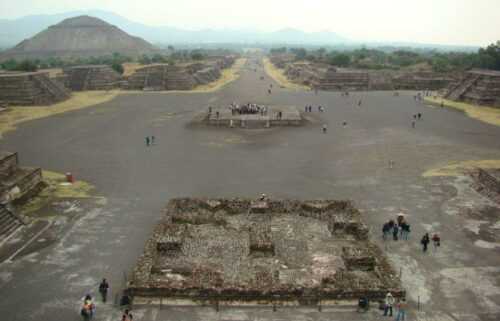
Half of them were from different regions that took shelter in Teotihuacan. The priest-rulers that reigned the town organized religious processions and rituals that frequently comprised human sacrifices.
Mural Art
Teotihuacan is known for its colorful murals inked on the walls. They could be seen several apartment complexes including other buildings recognized as palaces and temples.
The designs consist of the images of the storm god- Tlaloc, along with a goddess that is a scholar known as ‘Great Goddess’ associated with agricultural fertility. Other patterns incorporate jaguars, birds, owls, coyotes, and the feathered serpent.
Writing
Whether or not the pictorial figures discovered at Teotihuacan established a proper writing practice is still a cause of debate. A professor at the University of California- Karl Taube- praising the huge and old city- claims that the people of Teotihuacan had a convoluted system of hieroglyphic writing.
Teotihuacan Pyramids
Teotihuacan is set in a grid design that covers up about 20 kilometers. It holds about 2000 single story apartment complexes, as well as numerous pyramids, temples, plazas, and palaces of priests and nobles.
The townhouses countless huge, vital buildings- the pyramid of the moon, the pyramid of the sun, the Citadel (the Ciudadela), and the temple of the feathered serpent.
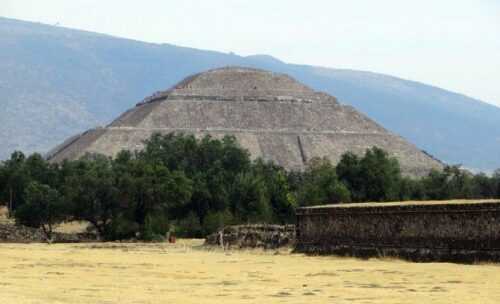
Pyramid of the Moon
The northern end of the road features the pyramid of the moon. Recent studies imply that the pyramid was built in periods; between 1 AD and 350 AD. It initially began as constructing small platforms and in the end, turned out to be a 150-ft-gigantic pyramid with a platform 550 feet by 490 feet.
Its lifted platforms were probably used for ceremonies that could be observed by the people on the ground. Tombs discovered connected with the building comprise both human and animal sacrifices alongside dire foods such as greenstone and obsidian.
Temple of the Feathered Serpent
Situated in the south of the pyramid of the sun is the temple of the feathered serpent, renowned as ‘La Ciudadela.’ The name was given by a Spanish Conquistador.
The crucial point of this pyramid is a 6-stepped pyramid which is smaller than the other two instances on the Avenue of the Dead. Two apartment complexes situated near might have been populated by local leaders.
It is contemplated that the pyramids completed its construction in the 3rd century AD. The lower structure has alternating heads depicting Quetzalcoatl- a feathered serpent god- a creature that seems to be Tlaloc- the storm god.
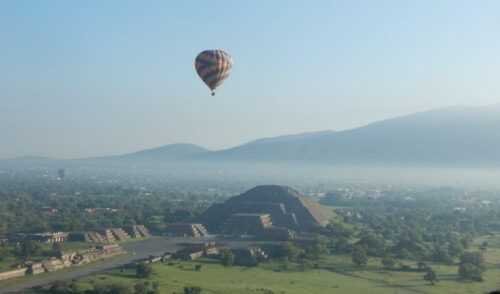
Researchers have found burials of 200 people nearby the pyramid. Out of which most were young men and the food offerings imply that they were warriors, probably of Teotihuacan.
They were found with their wrists intersected behind their backs insinuating that they had been tied up, and sacrificed for some purpose. Few older men and young women were discovered with offerings, as well
Pyramid of the Sun, (Piramides de Teotihuacan)
Enormous pyramid in the ancient city of Teotihuacan Mexico, that was developed around 100CE and is amongst the massive construction of its type. The pyramid heights about 66 meters and measures roughly 720 by 760 feet at its bottom.
Teotihuacan Pyramid of the sun overshadows central Teotihuacan from the east direction of the avenue of the dead, the main highway of the city. The pyramid was built of around 765,000 cubic meters of material, consisting of sculpted tezontle, a red coarse volcanic rock of the area.
Architect Leopoldo Batres, in the course of quickly organized restoration work in 1905-10, randomly built the 5th terrace, and several of the initial fronting stones were detached. On its west side, 248 bumpy stairs direct to the peak of the building.
No research could reveal about the inhabitants and the purpose of the pyramids of the sun. It is still a matter of speculation. Archaeologists believe that a temple was on top of the pyramid once upon a time.
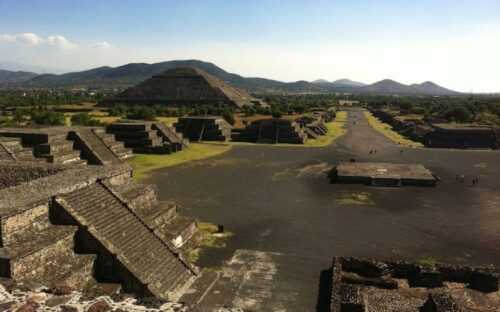
Early 1970s research exploration underneath the pyramid exposed a number of tunnel chambers, caves, and other channels that were discovered through the city.
In 2011, archaeologists working below the pyramid’s center stated discovering a store consisting remains of clay pots, animal skulls, pieces of obsidian, greenstone mask, and three greenstone human statuettes.
Additionally, it was proclaimed in 2013 that workers found a wrapped pit underneath the base that shapes the pyramid’s top. In the bottom were two pillars and a figure of a deity known as God Huehueteoti that was found in the pantheons of several Mesoamerican Civilizations.
Who Built Teotihuacan?
It is still under research as to who built the city. Based extensively on emigrant period writings, researchers once assumed that the Toltec civilization might have created a huge city.
However, the Toltec civilization succeeded 100 years after Teotihuacan reach its peak. Others believe that a tribe called Totonacs built and made it their home.
Another theory suggests that refugees following the volcanic eruption flooded Teotihuacan valley, and they developed the city and enhanced it. Teotihuacan seems to possess features of diverse cultures, involving Mixtec, Zapotec, and Maya.
Numerous researchers have many theories to propose. Teotihuacan was discovered before 400BC; however, the big buildings of the town weren’t finished until 300 AD.
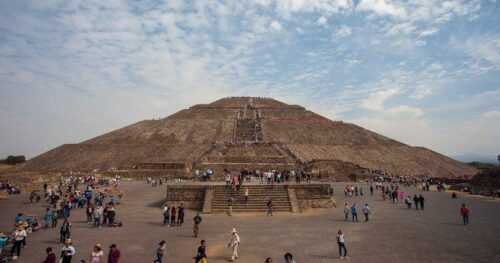
It is assumed that the city reached its zenith about 100 years later, with a 200,000 population.
Teotihuacan
The language, culture, politics, and religion of the Teotihuacan people are yet to be discovered. They had a hieroglyphic- based written language; however, it might have been restricted to names & dates.
The architecture and art of the city represent that it was a polytheistic society. The main Goddess was the spider of the goddess. Other idols consist of Quetzalcoatl- vegetation god whose significance altered in following civilizations- the rain of god Tlaloc, and the God of Spring- Xipe Totec.
The priests used to perform ceremonial sacrifices of humans and animals to these gods. In 1989, studies discovered 18 bodies buried in a long quarry on the south of the Quetzalcoatl temple.
The other 200 bodies that were found later were victims of sacrificing ceremonials during the commencement of the temple in the 3rd century AD. Several of these victims were warriors and was wearing a military uniform. Others were young women and men probably of rather high elite status.
In 2004, archaeologists exposed proof of sacrifices at the Pyramid of the Moon that states the region was a place to revel state power and militarism. These sacrifices involved 12 people with their hands crossed behind their back, 10 of them were beheaded and thrown at the burial tomb inside the pyramid.
The other two bodies were covered entirely in ornaments. Other sacrifices involved five wolves, three felines, and 13 birds. According to their culture and beliefs, animals presumed to be signs of warriors.
Teotihuacan Impact

Artifacts discovered in Teotihuacan and places throughout Mexico indicate that Teotihuacan was a prosperous trade capital in its peak.
The city specifically exported obsidian equipment, including dart heads and dart. Teotihuacan had domination over obsidian trade. The most significant deposit in Mesoamerica was situated nearby town.
Porcelains, such as pottery and other luxe goods, were valuable trade goods as a result of their highly wrought designs. Other trade goods included cacao, cotton, and exotic feathers, and shells.
Local crops involved avocados, beans, squash, and peppers. The city farmers bred turkeys and chickens. Remnants of the architecture and sculptures of Teotihuacan suggest that the city had an across-the-board impact; according to the studies done by the researchers.
The Reason Behind Teotihuacan Collapse
The reason behind its deterioration is unknown. In 60 AD, many structures were intentionally burnt, and pictures along with the religious figurines were demolished- indicating a revolt by the poor section of the society against the elites.
Another theory suggests that intruders destroyed and burnt the city even though Teotihuacan exercised its military force over other regions; however, the city dearth protection and the army buildings.
By 70 AD, the remaining populace of the town decided to go back to their ancestral homes or join neighboring cultures- abandoning their homes- leaving the city.
The debate over who were the natives who resided here still exists. Propositions range from Otomis, Totomecs, or Nahuas, to the more comprehensive suggestion that it was multi-ethnic.
The decline of the city started in the 6th century, as environmental matters spiked an increase in early deaths. These issues reached a turning point in the 7th century when several buildings of the elite classes were carefully burnt & destroyed, due to personal differences.
Ongoing Research

In 2003, a heavy cloudburst opened a vast sinkhole at the temple of Quetzalcoatl. Researchers have been exploring the site ever since.
By the end of 2015, they revealed over 75,000 artifacts of a different type, comprising seashells, animal skulls, pottery, and human skin. They have discovered a massive chamber consisting of a large amount of jewelry and other treasures, such as black stone statues, amber jars, and other ceremonial remnants.
How to get to Teotihuacan from Mexico City?
You could reach from Mexico City to Teotihuacan Teotihuacan is just 50kms away from Mexico City Centre, and comparatively easy to get to the pyramids. Buses leave from there several times from the northern bus terminal in Mexico. The terminal called Terminal Central Del Norte, and it is right outside the metro station Autobuses Del Norte on line no. 5.
Once you reach the bus terminal, turn left and go towards gate no.8. There you’d see booth offering tickets for buses to Teotihuacan. There are loads of food options available inside the terminal.
Notwithstanding stories of the sacrifices of humans and animals, it persists in being one of the most visually stunning archaeological sites in the country. The unearthing of this city never stops, as the latter pyramids are presently going through further diggings because the researchers discovered subterranean tunnels in 2014.
The architectural layouts and the design of the pyramids have inspired the initial Mexico Hotels in the early 1900s, and though most of the buildings have gone through extreme renovations throughout the years, you could still see traces of primitive Mayan culture all over.
Mexico to Teotihuacan tours package to Teotihuacan pyramids associate this trip to a religious experience. The area is still considered as sacred.
Read Also:
Discover the Best Ski Spots All Over the UK


